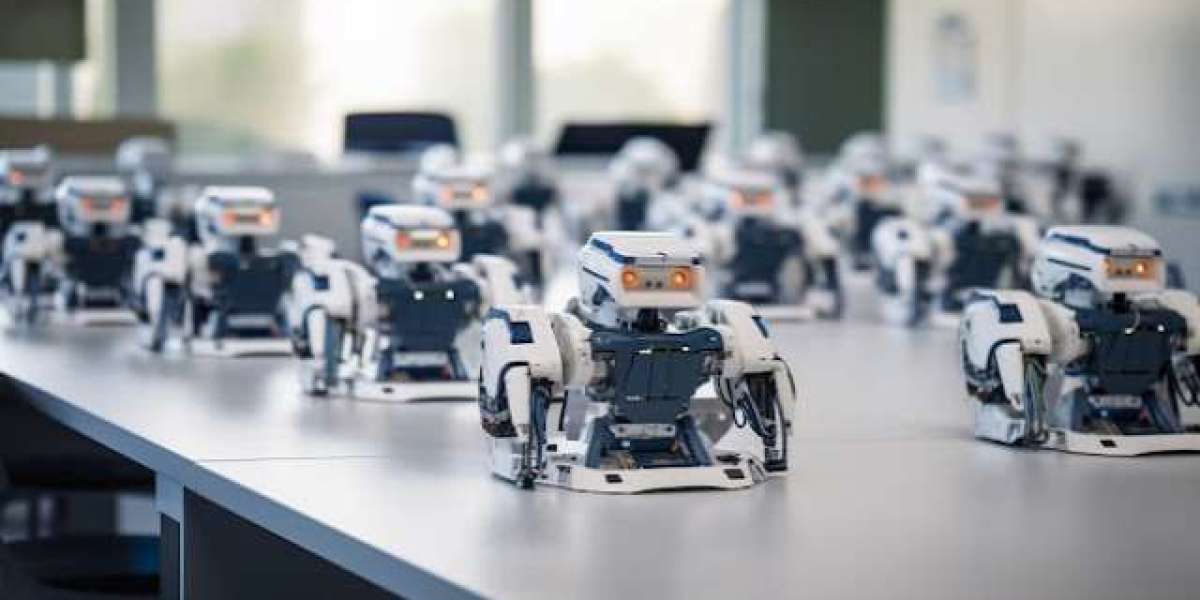Collaborative Robot Market Analysis: Future Outlook and Challenges

Strong 8k brings an ultra-HD IPTV experience to your living room and your pocket.
The collaborative robot (cobot) market is one of the fastest-growing segments in the automation industry, characterized by its transformative impact on manufacturing and other sectors. Unlike traditional industrial robots that operate in isolation from humans, cobots are designed to work alongside human workers, enhancing productivity, efficiency, and safety.
According to BISResearch, The global collaborative robot (cobot) market is projected to reach $6,972.6 million by 2033 from $2,104.2 million in 2023, growing at a CAGR of 12.73% during the forecast period 2023-2033.
Technological Foundations
Cobots are distinguished by their advanced sensor technologies, machine learning capabilities, and intuitive programming interfaces. These robots are equipped with sensors that enable them to detect human presence and adjust their movements accordingly, ensuring safe interactions. Machine learning algorithms allow cobots to adapt to new tasks and optimize their performance over time. Moreover, user-friendly programming interfaces make it easy for non-experts to deploy and reprogram cobots for various applications.
Collaborative Robot Market by Application
- Material Handling
- Assembly
- Molding Operations
- CNC Machine Tending
- Test and Inspection
- Packaging and Palletizing
- Polishing
- Screw Driving
- Gluing, Dispensing, and Welding
Increasing Demand for Automation Across Industries
Increasing Adoption Among Small and Medium-Sized Enterprises (SMEs)
Collaborative Robot Market by Region
Challenges and Considerations
- Integration with Existing Systems: Integrating cobots with existing manufacturing systems can be complex and costly. Ensuring seamless communication between cobots and other equipment is essential for maximizing their benefits.
- Initial Investment and ROI: While cobots are generally more affordable than traditional industrial robots, the initial investment can still be significant for some businesses. Calculating the return on investment (ROI) and justifying the expenditure can be challenging.
- Skills Gap: There is a need for skilled personnel to program, operate, and maintain cobots. Addressing this skills gap through training and education is crucial for the widespread adoption of cobots.
Future trends in the cobot market include:
- Enhanced Human-Robot Collaboration: Future cobots will feature even more advanced sensors and AI capabilities, enabling closer and more intuitive collaboration between humans and robots.
- Expansion into New Industries: While manufacturing remains the primary application area, cobots are making inroads into sectors such as healthcare, logistics, and agriculture. Their versatility and adaptability make them suitable for a wide range of tasks.
- Integration with IoT and Industry 4.0: The integration of cobots with IoT and Industry 4.0 technologies will enhance their connectivity and data-sharing capabilities, leading to smarter and more efficient manufacturing processes.
Conclusion
Note: IndiBlogHub features both user-submitted and editorial content. We do not verify third-party contributions. Read our Disclaimer and Privacy Policyfor details.







